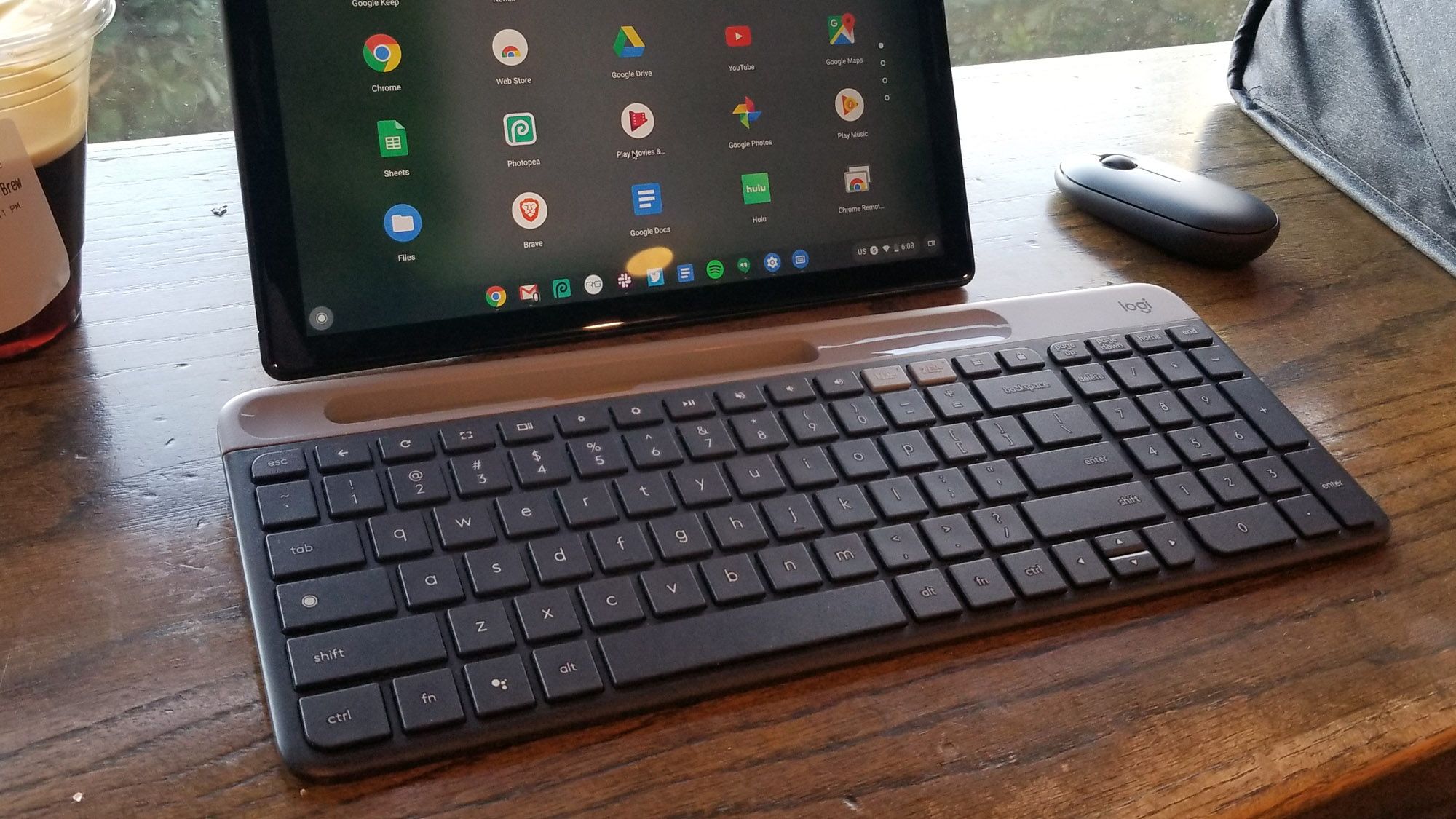
Chrome OS can’t get no respect. While it’s a perfectly serviceable and surprisingly capable operating system, it has to adapt to a world of keyboards made for Windows. Well, no more! Logitech’s K580 is its first made specifically for Chrome.
Technically, this isn’t the first Chrome OS-branded keyboard on the market—that honor goes to Brydge’s keyboards in the online Google store, not to mention the various keyboards included with all-in-one Chrome desktop machines. But this is the first you’re likely to see on the shelves at Best Buy, conveniently marketed alongside machines that run the quickly-growing, web-based OS. Note that this is the Chrome-branded K580; there’s an older version of the same model with a Windows layout.
So, how is it? It’s fine—neither great, nor terrible. It’s acceptable for the $50 price tag. It’s much easier to use with a Chrome OS computer than a standard Windows-compliant keyboard, thanks to the properly-labeled and software-assigned keys.
But if you’re hoping for a keyboard to match the excellent keys on the Pixelbook or Pixelbook Go, you’ll probably be disappointed.
It’s All About the Benjamins Buttons
The biggest problem with using a Windows-bound keyboard on Chrome is that the function row doesn’t match up. Even on desktops and all-in-ones, Chrome uses the F1-F12 keys for laptop-style controls, like volume, brightness, notifications, and so on.

Chrome’s default ANSI-style layout is a bit different, too. Older designs go without a meta (“Windows” key) and use oversized Ctrl and Alt buttons, and Caps Lock is replaced with a dedicated Search key (the equivalent of the Windows key). Later designs from Google have once again added the meta key and bound it to Assistant voice commands.

The K580 has all of these, and they all work (at least with the Pixel Slate that has become my go-to travel computer). Normally, I type on a home-built mechanical keyboard, and I’ve grown accustomed to the way Chrome OS adapts its input to a Windows-dominated world.
It’s convenient to have the correct Search and Assistant binds (so you don’t have to dive into the Settings menu). It’s also great to be able to adjust the volume and brightness without having to look up a table of key bindings.
Travels Well, but Meant for the Desktop
The K580 follows recent trends in mainstream keyboard design, i.e., it’s small and thin. Despite the full 10-key area, it’s only about an inch thick at the thickest point, and the membrane keys are clearly going for a laptop feel.

Read the remaining 14 paragraphs
from How-To Geek https://ift.tt/2WJSaxv

No comments:
Post a Comment